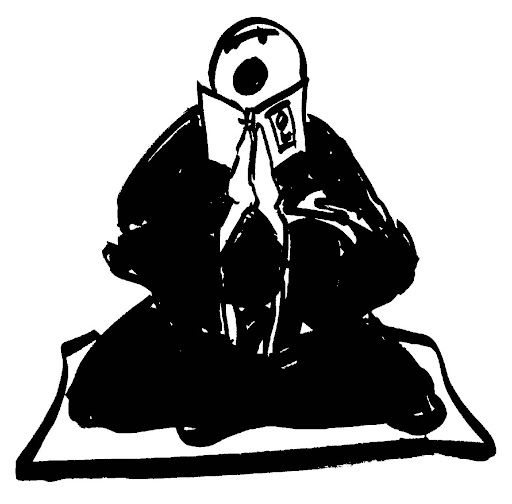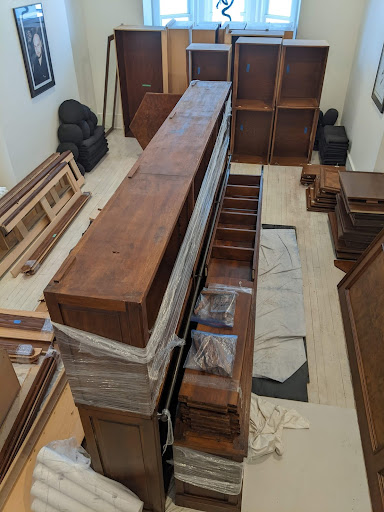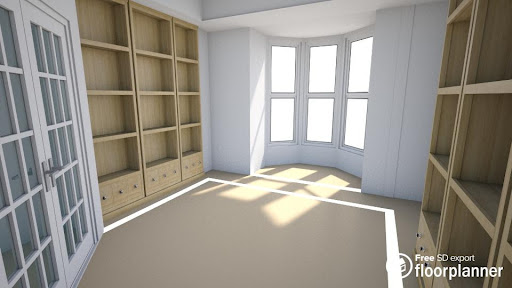
Chanting monk zenga by Ven. Anzan Hoshin roshi
eMirror Vol 26, No. 13

Chanting monk zenga by Ven. Anzan Hoshin roshi
eMirror Vol 26, No. 13
Friday, March 25th
Edited by the Practice Council
The White Wind Zen Community:
An international community practising and teaching Dogen’s Zen since 1985.
If you do not play an instrument or do not want to question into how and why you listen to or do not listen to the kind of music you listen to or do not, you are not off my hook as yet. My job is to fish beings out of the shallow pools and release them into and as the Ocean of Reality. And then to pull them out of that and throw them into what the Ocean of Reality arises within. Consequently I am patient, know my lures, am determined and perhaps a bit cunning.
So. Have you ever spoken before? Or listened to someone speak? I am willing to wager that you have. After all, if I am wrong, you are not listening to my wager anyway.
For human beings, hearing is intimately associated with speech. The activity of speech is itself very interesting. Not to speak of what detailed activity must move throughout nerve endings, the brain and so on in order to process sounds, parse them into words and sentences and so on, let us consider something about what is involved with the physical activity of speaking.
The larynx is low in our throats, unlike with animals. Through expelling air over the vocal folds in the throat and through deft articulations of jaw, teeth, tongue, palate, and lips, we can articulate a large range of sounds. All of the most basic sounds are known as “open sounds.” These are what we call vowels: A, E, I, O, U. And of course, variations on these: A, AA, AhA, E, EE, Eehe. And so on. The most basic sound is A which can be made through simply opening the mouth and jaws and letting the tongue rest:
AAAAAAAAAAAAAAAAAAAAAAAAAAAAAAA.
The other vowels are modifications of A. The next most basic group of sounds are called “stopped” or “closed” and these are consonants: B, C, D. You will notice that consonants contain vowels. Without an open sound as its basis, a stopped sound would be almost inaudible. “B” “Beeeeee.”
When we speak, the sound comes not merely from the throat, the movement of the tongue and so on. There are various areas of the body called resonators. Many people speak primarily from the resonator of the throat. But this proves tremendously stressful for the delicate tissues of the vocal folds. People who sing this way often strip their throats. There are also resonators in the tanden which is below the belly wall, in the area of the diaphragm and chest, and the space above the head is traditionally used as a resonator as well in Zen chanting practice. Actually, all four of these resonators are used in chanting practice.
-Ven Anzan Hoshin roshi, continuing Class Three: The Sea of Sounds" in the series "Zen Arts: The Flowering of the Senses", October 1999 Daruma-ki O-sesshin, Dainen-ji.
Fusatsu: March 30th, April 13th and 27th.
Hanamatsuri Two-day Sesshin:
The Hanamatsuri two-day session will begin at 8:00 p.m. on Friday, April 8th, and will end at 6:00 p.m. on Sunday, April 10th.
Hermitage:
The Roshi is currently in an extended period of "self-isolation" due to underlying health issues until the COVID-19 situation clarifies.
Beginning Instruction in Zen Practice:
For information concerning our Long-distance Training Program, please visit this Web Page: https://wwzc.org/long-distance-training-program
Rev. Chiso anagarika sat her weekly semi-retreat on Tuesday, March 22nd at her home in the Berkshires. Tarik Kaya sat a half-day retreat on Saturday, March 19th at his home in Ottawa, Ontario. Thach Hoang sat a one and a half-day retreat from Saturday, March 19th to Sunday, March 20th at his at his home in Laval, Quebec.
If you would like to sit a retreat at home please follow the schedule outlined in this page: https://wwzc.org/retreat-schedule-public-students. After your retreat, please send an email to schedule@wwzc.org to confirm that you sat a retreat and include the duration and location.
We anticipate that over the next two months, a further $10,000 will be needed to complete the first part of the Shuryo project and install a plywood floor in the remaining two rooms (guest room and public washroom).
Work has recently begun on converting the empty east wing rooms at Dainen-ji. The first part of the project is to build the Shuryo (a monastery Library and Study Hall) in the main section of the space. As you will have read about previously in the eMirror, Saigyo ino travelled to Toronto recently to dismantle and bring back a large second-hand oak and burled walnut library, which will be built into the new space.
As the dismantled library is currently being housed in the Zendo (one of our two practice rooms), it is a priority to get this room completed so that the Zendo is functional again for when the monastery opens to students and to the public.

Dismantled library currently in the Zendo
Saigyo ino has made arrangements to take two months of unpaid leave from his work to do the majority of the construction and, with as much help as possible from students, hopes to complete the work by May.
Although a great deal of money will be saved by having the Ino and students work on this project, funds are still required for the purchase of materials and to pay an electrician for the electrical work needed. If you are able to donate towards this project your help will be very much appreciated. All donations will be tax deductible. And if you would like to assist with the work, please contact the Ino at saigyo dot cross at wwzc dot org to discuss your schedule.
Thank you very much.
Here are a couple of renderings by the Ino which gives an idea of what the Shuryo will look like when completed.


Saturday, March 26th to Saturday, April 2nd
Saturday, March 26th: "Drawn In, Moving Forth": Zen Master Anzan Hoshin's Commentaries on Eihei Dogen zenji's “Bendowa: A Talk on Exerting the Way”: "Stories of Stones and Stars" (26 of 28)
Monday, March 28th: “Every Breath You Take” by Ven. Shikai Zuiko o-sensei: “Seeing People in Good Health" (Dharma Talk 82)
Thursday, March 31st: "Opening Traps and Cages, part 2" by Ven. Jinmyo Renge sensei
Saturday, April 2nd: "Drawn In, Moving Forth": Zen Master Anzan Hoshin's Commentaries on Eihei Dogen zenji's “Bendowa: A Talk on Exerting the Way”: "Hit the Mark" (27 of 28)
Associate and general students should continue to follow the recorded Teachings schedule for the sitting you were attending at the monastery, and listen to that during your home practice.
You can access the online Recorded Teachings Library at wwzc.org/recorded-teachings-schedule.
You can also use the streaming site at app.wwzc.org to live stream recordings from the online Library. If you have forgotten your password or need assistance with accessing the recorded Teachings, please email schedule@wwzc.org.
Please note that teisho should be listened to in the correct order and with none missed out as themes, metaphors, questions raised and answered evolve in spirals throughout the series.
While most of the online Recorded Teachings library is password-protected and only accessible to students of the Lineage of Zen Master Anzan Hoshin, a small selection of MP3 recordings of teisho are accessible to the public at wwzc.org/recorded-teachings Additional recordings will be uploaded periodically. MP3 recordings of four recorded teisho by Ven. Anzan Hoshin roshi are currently available:
Dharma Position https://wwzc.org/dharma-position
Eyes See, Ears Hear https://wwzc.org/eyes-see-ears-hear
Embarrassment https://wwzc.org/embarrassment
Ven. Anzan Hoshin roshi's reading of his translation of Eihei Dogen zenji's “Bendowa: A Talk on Exerting the Way”: https://wwzc.org/bendowa-talk-exerting-way

Photograph of Ven. Anzan Hoshin roshi at Daijozan, mid-1980s,
by Ven. Shikai Zuiko sensei
Ven. Anzan Hoshin roshi has recently completed translation work on some shorter texts by Eihei Dogen zenji from the Shobogenzo. The work on these particular texts is based upon the literal translations that he worked on with Joshu Dainen roshi at Hakukaze-ji around 1977-78 followed by many years of putting them down, picking them up, and polishing. Naturally, more essential texts such as Uji, Genjokoan, Shinjin Gakudo and some 40 others were completed first and have been given extensive commentaries by the Roshi. This batch of texts includes Baike: Plum Blossoms, Ryugin: Howling Dragon, and Udonge: The Udumbara Blossoming and many others are nearing completion. Annotation details and successfully conveying them across various document formats are the issue at this point.
Work on Bussho: Buddha Nature, a very long and nuanced text by Dogen zenji, is ongoing.
Roshi is also finishing an update to the Saijo Shingi: The Deportment of Radiance, our manual of monastic training standards which is a supplement to the ancient Eihei Shingi and Keizan Shingi.
Begun by Ven. Shikai Zuiko o-sensei
Finished by Rev. Fushin Comeau shramon following her death

Continuing on with “Painted Cakes: A Zen Dictionary,” a limited edition text written by Anzan Hoshin roshi in the 1980s and last revised in 1994.
Sutra (S); Sutta (P); Kyo or Gyo (J); Ching ( C)
A "thread" of discourse. A record of Buddhist teachings.
Posted March 18th, 2022. New entries are posted every two weeks.

Dogen zenji taught in the Tenzo kyokun: Instructions for the Tenzo (https://wwzc.org/dharma-text/tenzo-kyokun-instructions-tenzo) that the work of preparing and serving meals is "a matter for realized monks who have the mind of the Way or by senior disciples who have roused the Way-seeking mind." In alignment with this, part of Zen Master Anzan Hoshin's samu for the Community involves personally overseeing the activities of the ancient office of tenzo. Ven. Jinmyo Renge sensei serves as tenzo and Mishin godo and Saigyo ino offer assistance as tenzo-anja. The following meals were prepared for residents on Monday, Tuesday and Thursday evenings.
Monday Yakuseki:
Basmati white and brown rice; chana dal ((black chickpeas, onion, minced green chilis, minced ginger and garlic, chopped tomatoes, coriander leaves and stems, black cardamom, cinnamon, cumin seeds, turmeric, coriander, black pepper, Kashmir red chili powder, garam masala, amchur (dried mango powder); salad of Romaine lettuce, chicory, chopped cucumbers, tomatoes, celery, radishes.
Tuesday Yakuseki:
Okonomiyaki - Japanese pancakes (chopped green cabbage and scallions mixed with a batter made from cake flour, grated nagaimo yam, baking soda, eggs, beni shoga (salty, spicy red pickled ginger) and hondashi (not included in vegetarian version). The pancake is cooked on one side with a layer of bacon on the bottom; Vegetarian version did not contain bacon; toppings were okonomiyaki sauce, Kewpie mayonnaise, chopped nori and optional bonito flakes; miso shiru broth with mushrooms (reconstituted shitake mushrooms, shoyu, ginger, miso).
Thursday Yakuseki:
Crusty rolls with butter; lentil/split pea soup (vegetable stock, red lentils, yellow and green split peas, barley, basmati rice, diced potatoes, diced carrots and celery, minced garlic, tomato paste, oregano, basil, thyme, cayenne pepper, black pepper); green cabbage coleslaw (thinly sliced green cabbage, carrots, white onion, mayonnaise, lime juice, Dijon mustard, horseradish, black pepper and salt).
.jpg)
If you would like to thank someone for a contribution they have made, please feel free to send an email to Jinmyo osho at rengezo at Gmail dot com, but be sure to type "eMirror" in the subject line.
From Mishin godo:
Thank you to Saigyo ino for arranging the foam insulation contractors for the first floor Shuryo. Thank you to Fushin shramon for testing and troubleshooting the wifi connection and settings for the new doorbell system. Thank you to Daryl David for picking up a monastery order at Lee Valley and for bringing a raspberry custard tart for residents.
From David Gallant:
Thank you to Jinmyo sensei for instruction in taking care of my resident space each week, helping me to keep it clear and bright. Thank you to Saigyo ino for the many unpaid hours of labour he is currently putting in each week on the east wing renovation project. Thank you to my mother for donating an electric guitar that can be sold and the proceeds used to support the east wing renovations.
From Ian Richard:
Thank you to Mishin godo for much needed and very helpful instruction in a recent practice interview. Thank you to Saigyo ino for directing samu and for explaining with such clarity not just the what's and the how's but also the why's.
From the Office of the Treasurer:
Thank you to Gillian Hern, Sarah Goul, Marc Valade and Robin Whitehead for donations to construction of the first floor Shuryo (study hall and library).
|